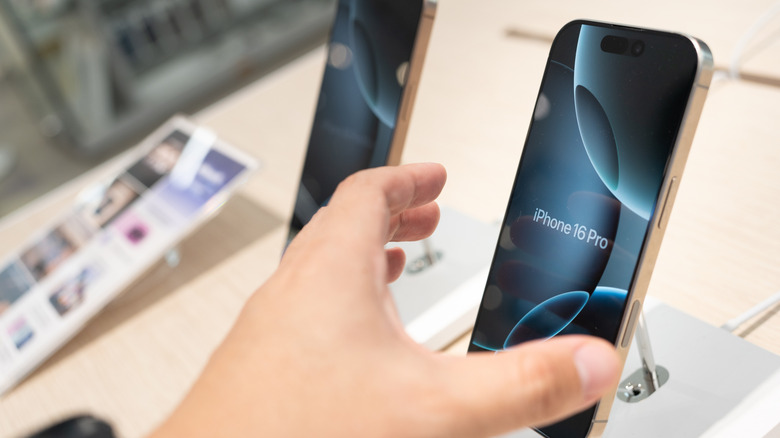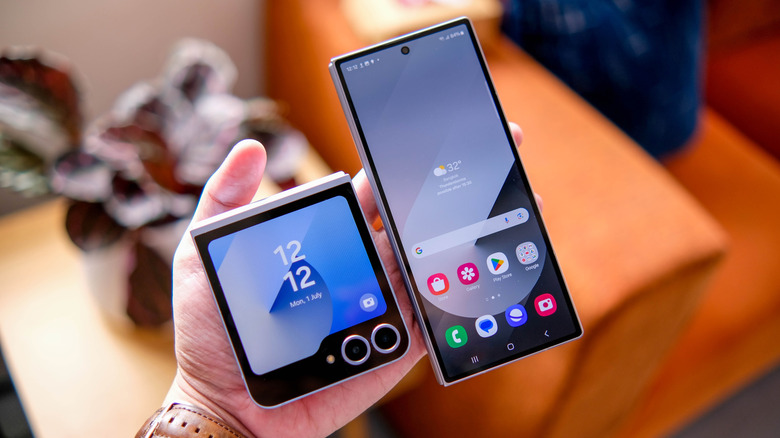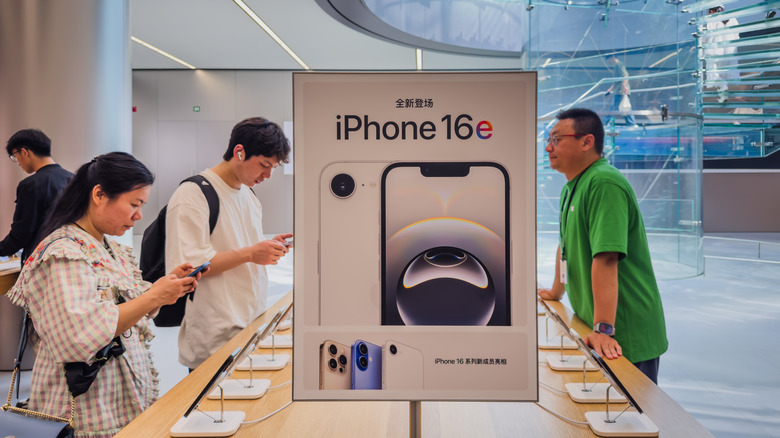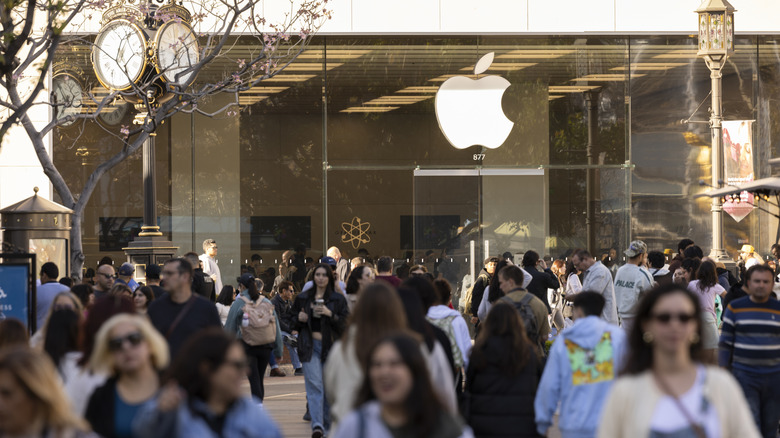Why Apple's Foldable iPhone May Outclass Rival Devices From Google And Samsung
Apple famously prides itself not on being first to market, but on being the best. We saw this play out with the iPod, the iPhone, and to a lesser extent with the Vision Pro. Indeed, Apple executive Greg Joswiak a few years ago said that Apple won't even enter a market if it can't deliver a product that's best-in-class. In light of that, it's only natural to wonder if Apple's forthcoming foldable iPhone will be able to make a huge splash in the foldable smartphone market.
One of the reasons Apple was able to dominate the MP3 player and smartphone markets, with the iPod and iPhone respectively, is because those markets were filled with companies that couldn't come close to matching its level of design and user experience expertise. This allowed Apple to swoop in and immediately make an impact.
The foldable smartphone market, however, is different. The market today is dominated by Samsung and Google, two sophisticated players that have done an impressive job of refining the user experience in recent years. As a quick example of Google's innovation, the recently unveiled Pixel 10 Pro Fold is the first foldable smartphone with an IP68 rating for dust and water resistance.
Apple's domination of the foldable smartphone market is anything but a foregone conclusion. That said, while it's impossible to know for sure, there's mounting evidence that Apple's foldable iPhone will be able to distinguish itself from other high-end premium devices.
Apple's foldable iPhone may solve a glaring problem
One of the longstanding drawbacks to foldable smartphones is that they inevitably show a crease at the point where the display bends. Apple is reportedly working hard to ensure that its take on a foldable smartphone addresses this issue. According to a report from ZDNet Korea, Apple has managed to develop a new display technology that prevents creasing, with Samsung already working to establish a supply chain to support display production.
Notably, this claim has been echoed by Ming-Chi Kuo, who has a particularly strong track record with respect to Apple rumors. Indeed, it's been reported that Apple will ensure that its foldable iPhone adheres to the same durability requirements as its regular iPhone models. Kuo specifically articulates that Apple's solution to prevent creasing involves a metal plate that will be tightly integrated with the display itself.
"The primary cause of creasing in foldable phone displays is stress concentration at the fold points during repeated bending," Kuo writes. He also adds that the aforementioned metal plate will help "distribute and control bending stress, preventing the display material from exceeding its elastic limit and thereby minimizing the likelihood of creases." What's more, Kuo notes that the production process will include "laser drilling... to create microstructures that better guide stress distribution and enhance crease resistance."
Apple's foldable iPhone may offer best-in-class battery life
It's no secret that Apple prefers to control as much of the underlying technology in its products as possible. To this point, Apple for years has been trying to wean itself off its dependence on Qualcomm. Qualcomm has provided the modems used in iPhones for years, and the licensing deals for Qualcomm's hardware are expensive. In fact, you might recall that Apple a few years ago was involved in a contentious lawsuit with Qualcomm over royalty payments.
Designing and building a wireless modem requires plenty of engineering resources and know-how, and Apple has reportedly found the endeavor more challenging than expected. You might recall some analyst reports claiming that we'd see an iPhone with an Apple-designed modem as early as 2022. Ultimately, Apple's in-house designed modem, dubbed the C1, didn't debut until Apple introduced the iPhone 16e in early 2025.
Reviews of the C1 have been overwhelmingly positive, with reviewers noting that the modem is impressively power-efficient and consumes less battery power than comparable devices with Qualcomm modems. Regarding the foldable iPhone, Bloomberg relays that the device will reportedly ship with a next-gen C2 modem. And given Apple's history of impressively improving upon its chip designs, the C2 could very well provide Apple with a qualitative edge in battery life compared to devices like the Galaxy Z Fold 7.
Price remains a big question mark
If Apple wants its foldable iPhone to sell well, it will have to avoid the pricing strategy it used on the Vision Pro. For as much as users love the headset, the simple reality is that it's far too expensive to truly be a mainstream product.
Foldable smartphones are undoubtedly premium devices, and Apple famously isn't afraid to price its premium products accordingly. Currently, high-end foldable smartphones from Google and Samsung cost anywhere from $1,800 to $2,000. It therefore stands to reason that Apple's take on a foldable smartphone will, at the very least, be priced around that range. Apple might want to price its foldable iPhone even higher, but if it does, it runs the risk of pushing prospective buyers into looking at more affordable devices from Google and Samsung.
When Apple enters a new product category, it isn't afraid of premium pricing. The original iPhone, for example, launched at $499. This was markedly higher than other smartphones at the time. Recall that the BlackBerry Curve 8300, which launched in 2007, was originally priced at $199. If history is any indication, Apple's foldable iPhone might cause some sticker shock when the price is finally revealed. But if Apple can keep the price down, it has a strong chance of controlling the market.
The good news is that we won't have to wait long to see what Apple brings to the table. Barring any developmental or production delays, Apple's foldable iPhone will reportedly be unveiled as part of the company's 2026 iPhone lineup next September.



